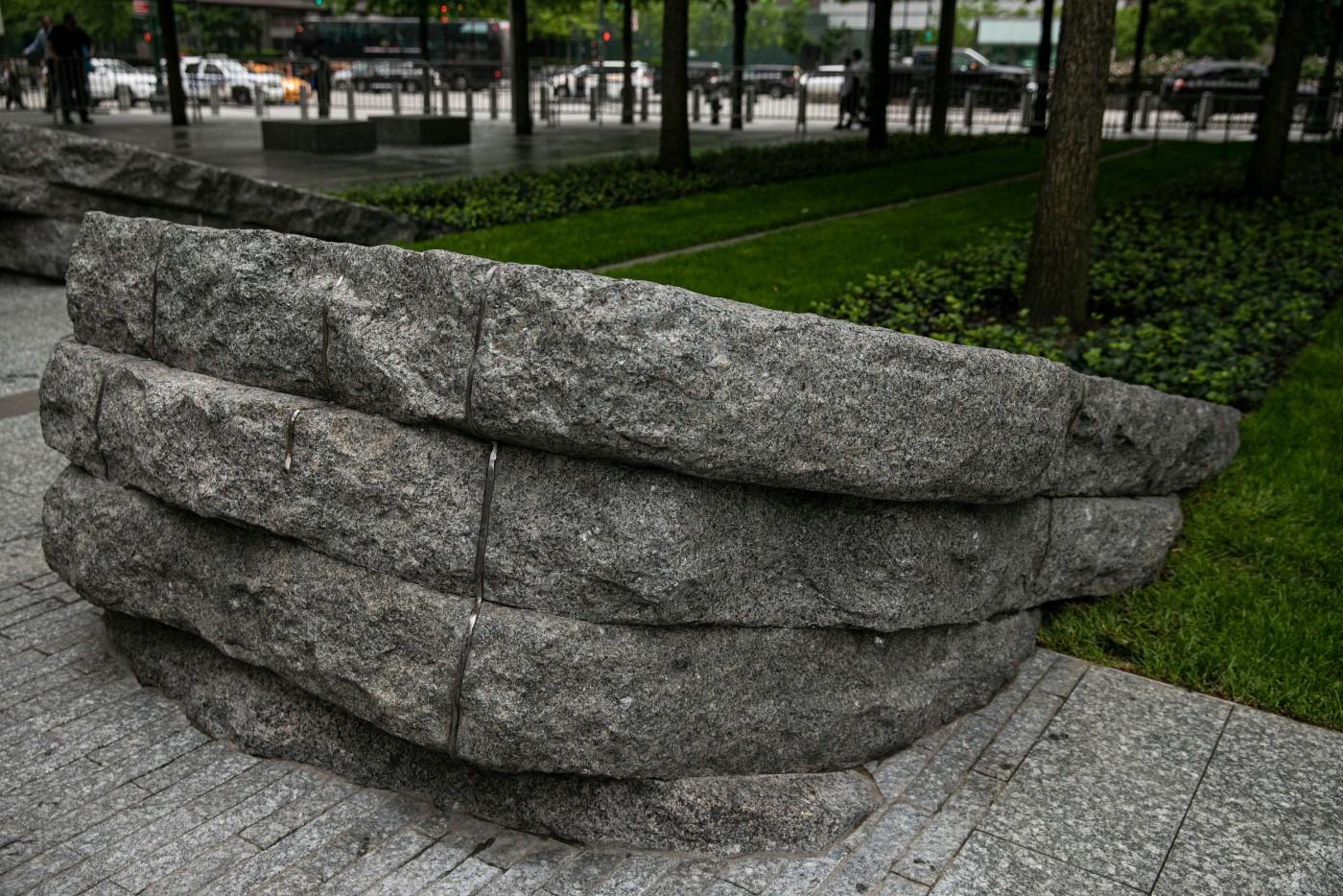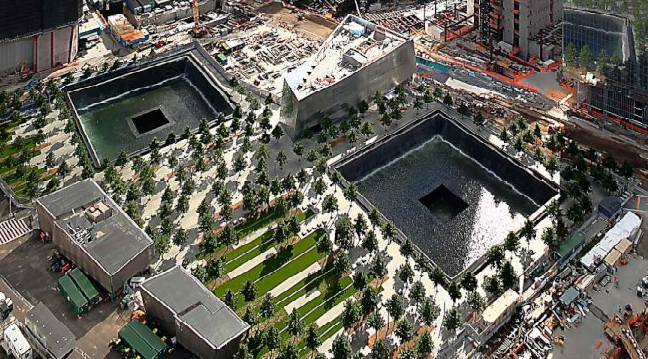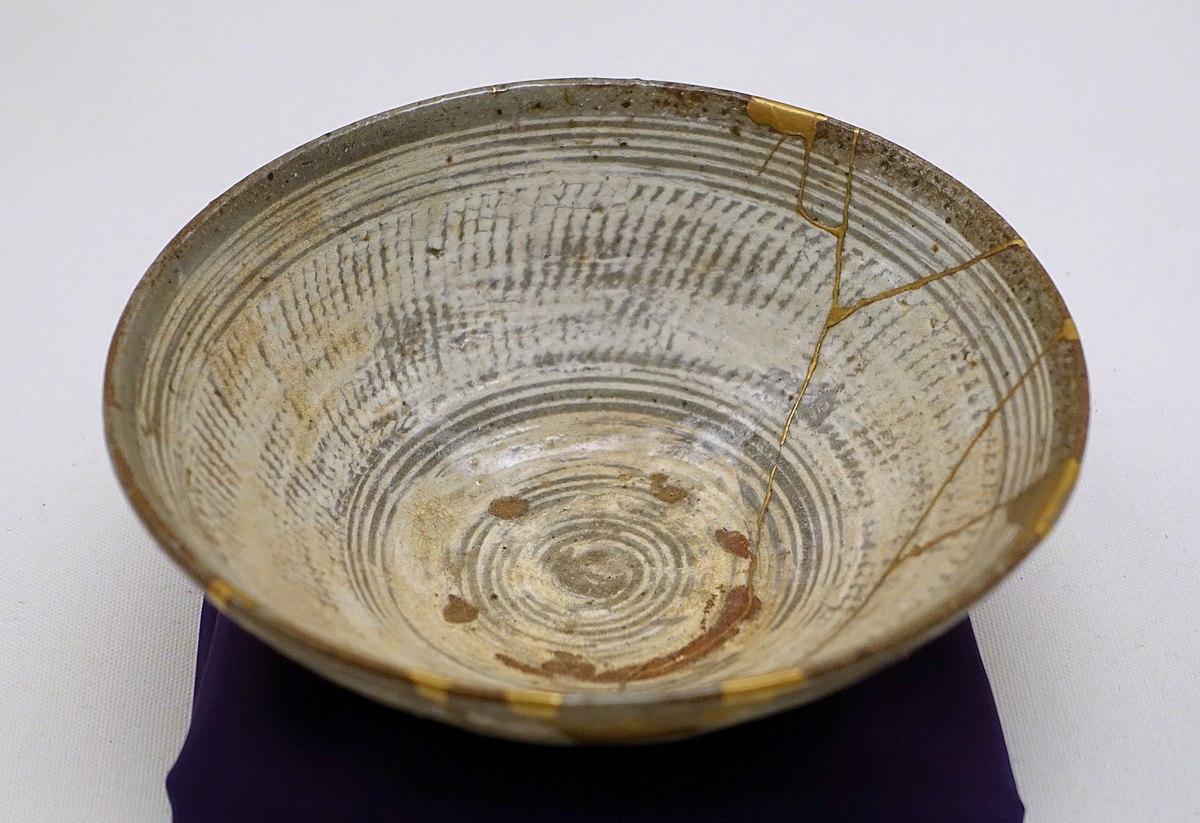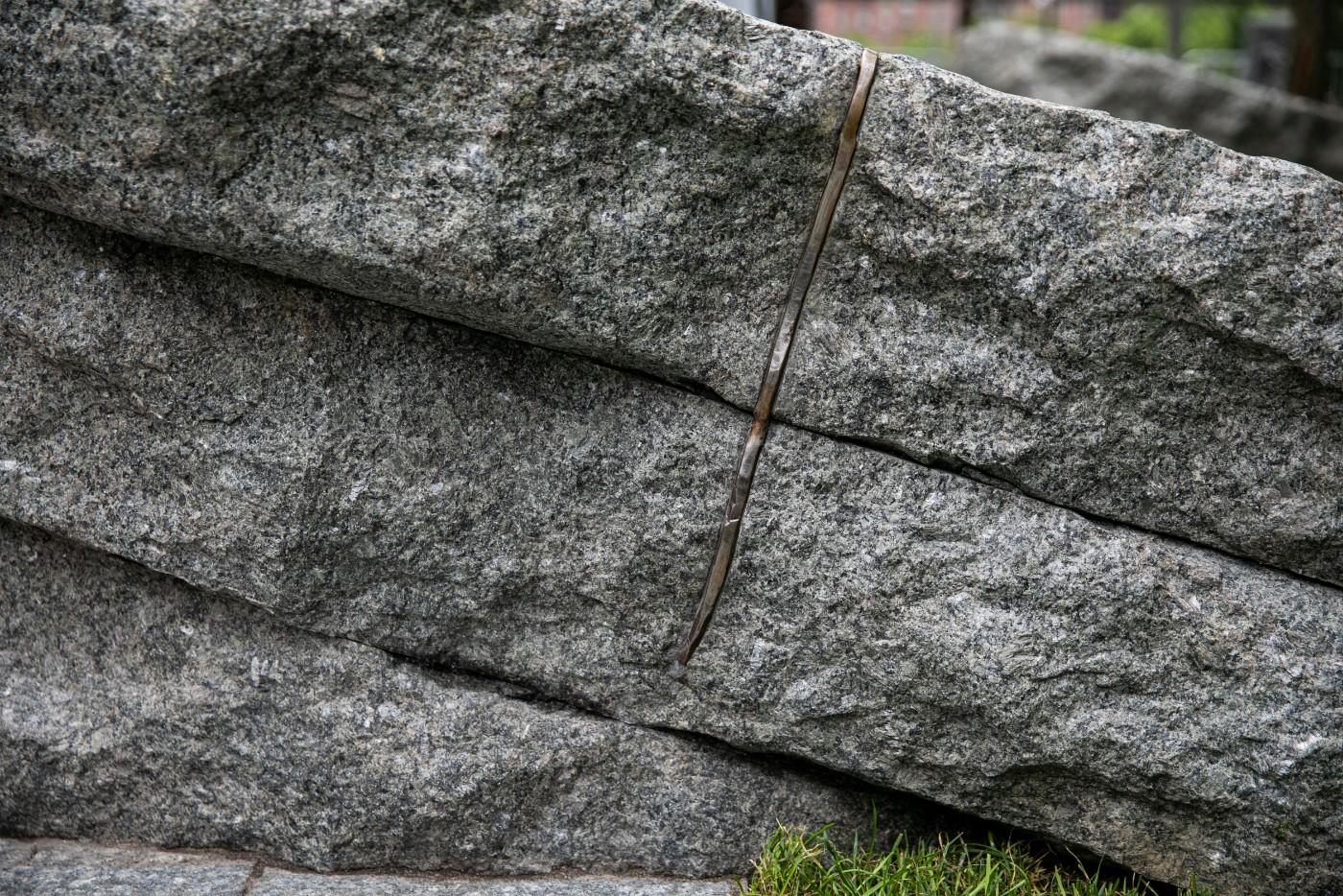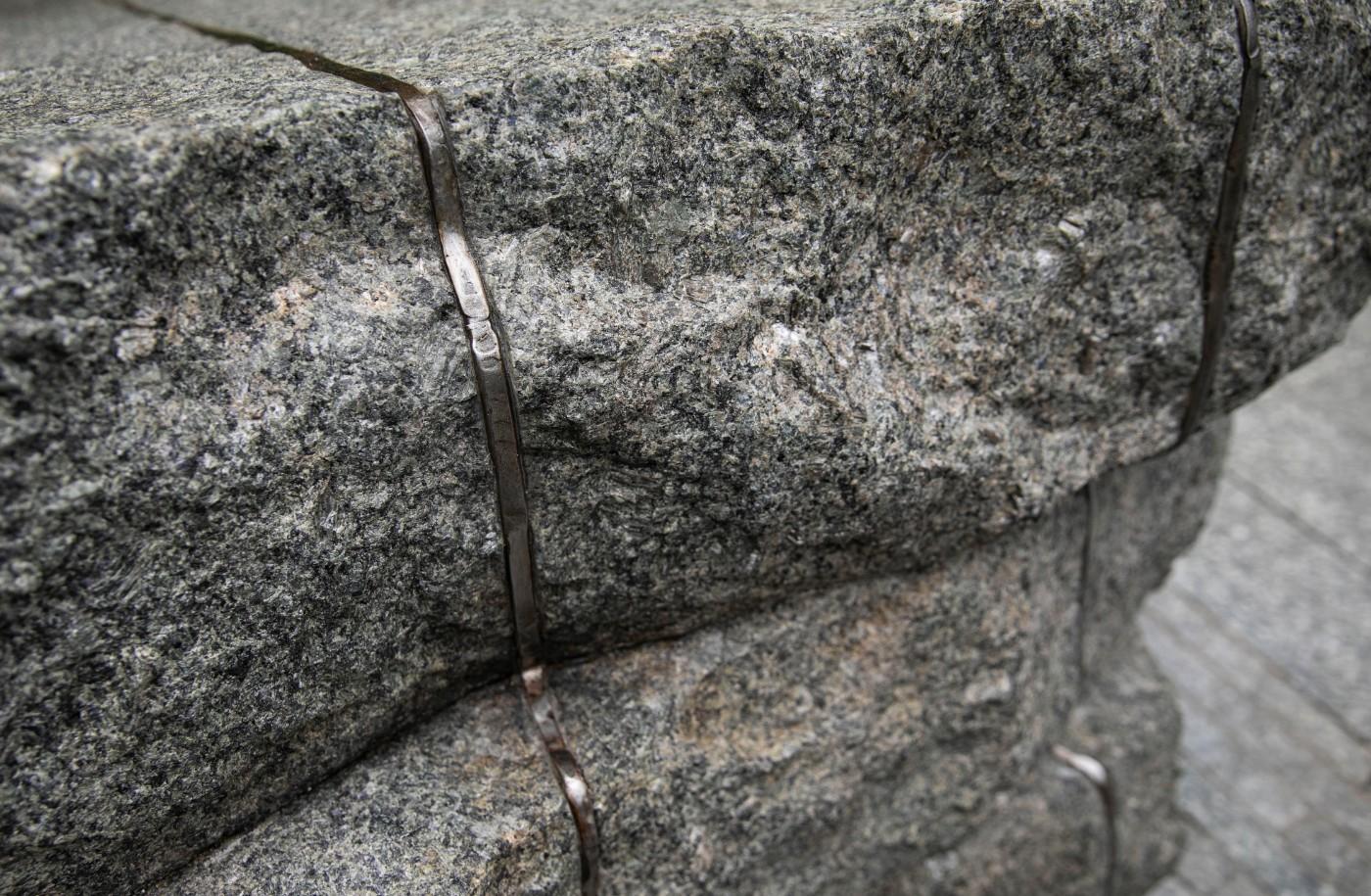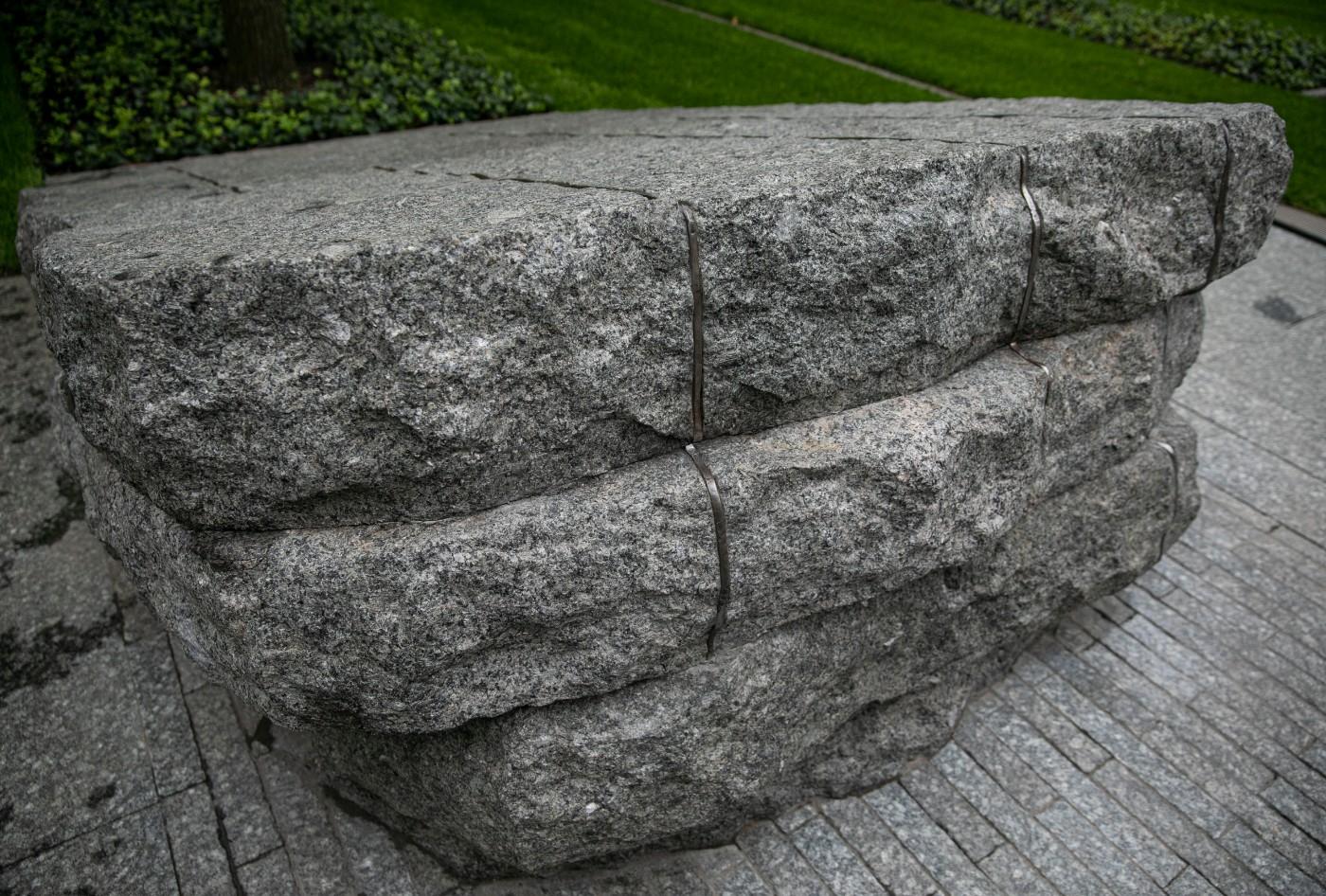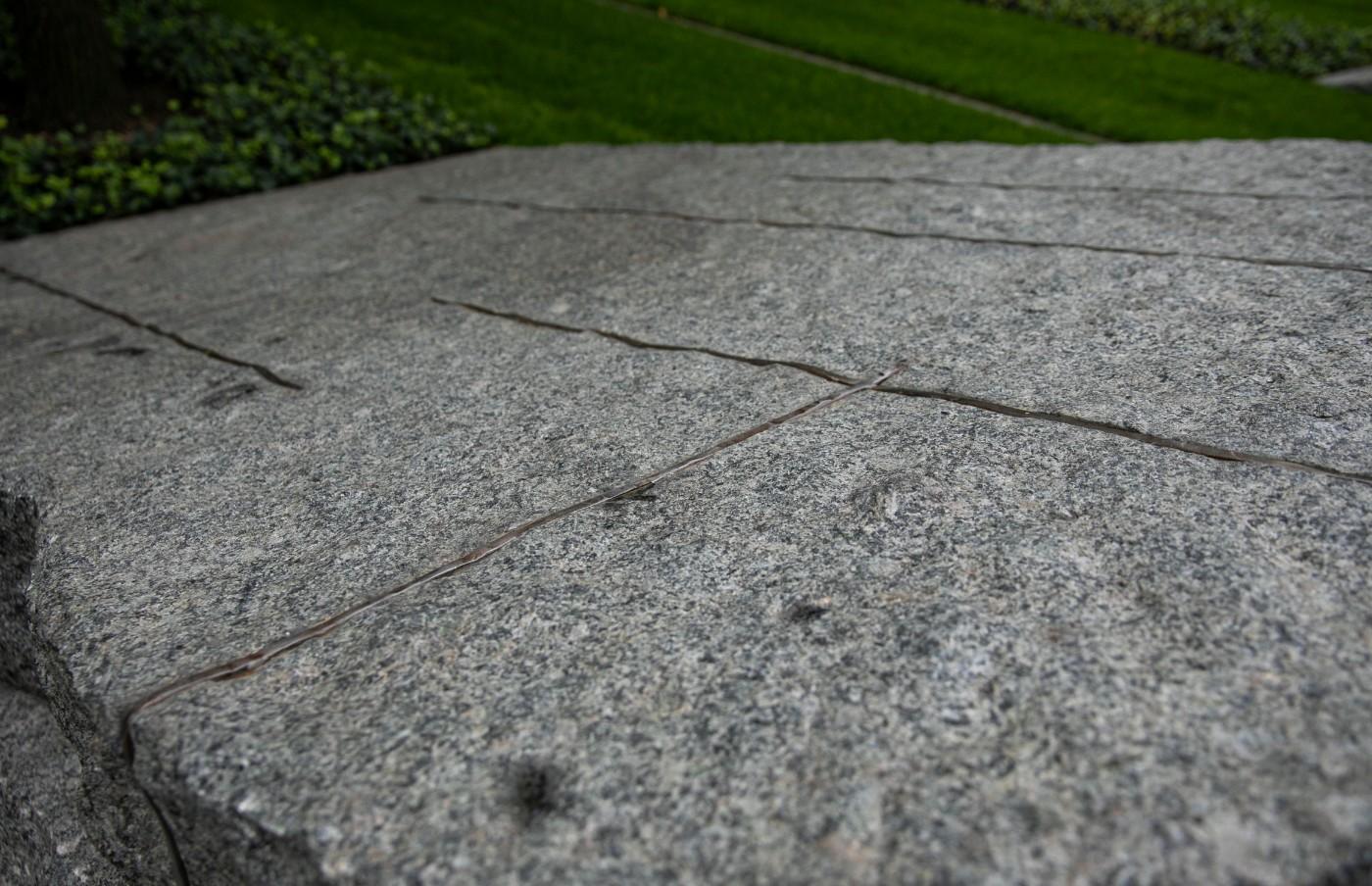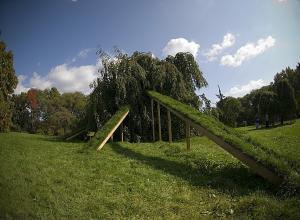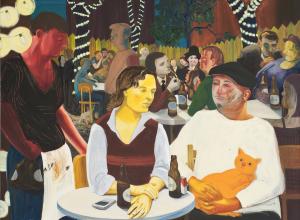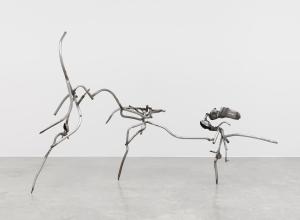The Glade comprises a pathway, its location marking the historical placement of the main ramp used during the recovery period. Flanking the pathway are six large stone monoliths that incorporate steel from the original World Trade Center in a design inspired by the Japanese repair technique called kintsugi.
When the architects decided to incorporate the steel into the design, the kintsugi tradition first came to mind. Meaning “golden joinery,” kintsugi emerged around five centuries ago in Japan when artisans repaired broken ceramics using lacquer and gold. Traditional kintsugi method uses lacquer as a glue and filler. When the lacquer is dry and hardened, it is sanded down flush with the vessel. Then, the lacquer seams are painted over with gold pigment. Kintsugi was a practical and beautiful method of repair that was used in Japan, China, and Korea. For the Glade’s stone monoliths, “mending” occurs with melted steel.




